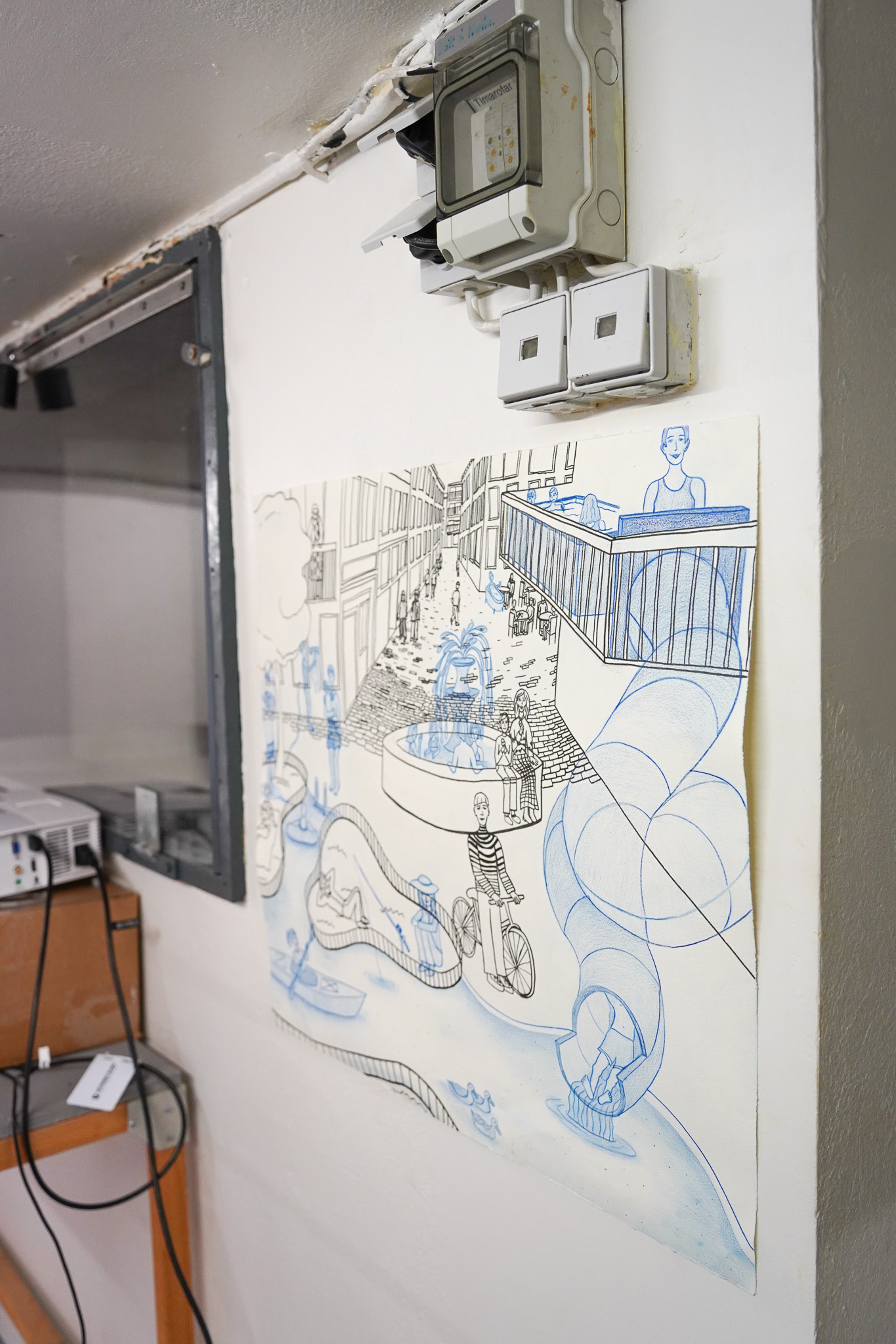
Water is the primordial material through which humans conceptualize, experience, and express the world. A world we engage with through man-made structures. A world of architecture where fresh water comes in and wastewater goes out. A world of homes where we brush our teeth and take a shower as we turn on the faucet that controls the water flow out of a pipe connected to a water tank - crucial to life in the city.*
While the human body's water proportion ranges from 50-60% it is more common to view water in the limited light of capitalizing, keeping away from, and navigating across water. Most urban settlements were initially built around the commodification of rich fishing sources of the Atlantic Ocean surrounding the island of Iceland. Since the early 20th century, water has constituted the electrical engine of urban life and is at the core of a central heating system. A system that originally accommodated daily life but is increasingly harnessed for industrial purposes, and a growing wellness industry that embraces the sources of geothermal waters.
By plunging into water, students have explored and inquired into the notion of water. With the application of architectural tools, they have researched, speculated on, drawn and modeled water relations in the built environment as they have engaged from a more-than-human perspective, envisioning more-than-human habitats. Each project offers a distinct reflection on soaking, charging, unveiling, framing, designing and immersing into water. Together, contributing to a collective vision of being in water. And being water.
*The water tank that frames the exhibition was built in the early 1960’s and is one of six tanks in the capital area containing on average seven to eight thousand tons of water. The water derives from water sources in Heiðmörk and is distributed through a system of pipes towards houses in the oldest neighborhoods in Reykjavik.
Anna María Bogadóttir
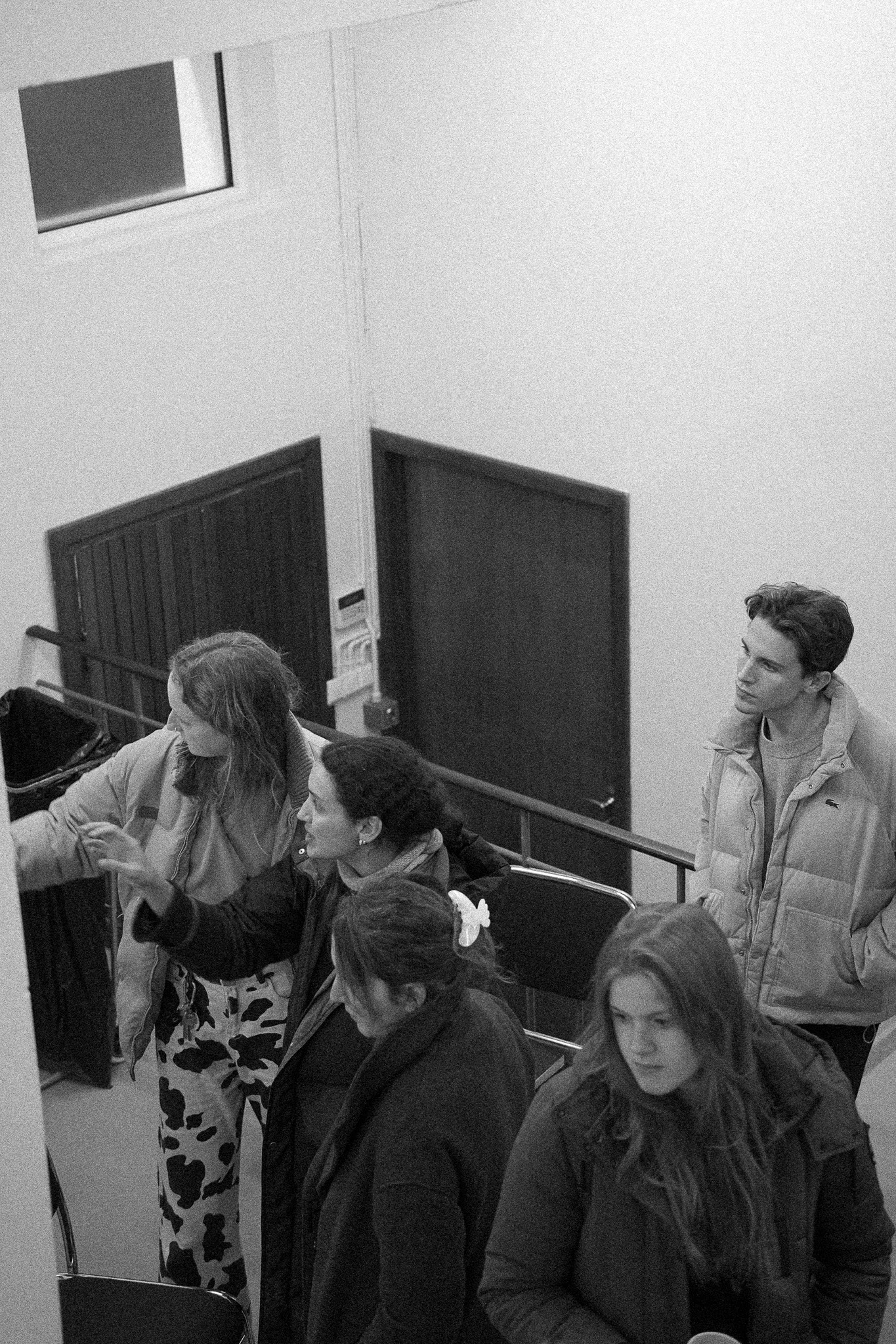
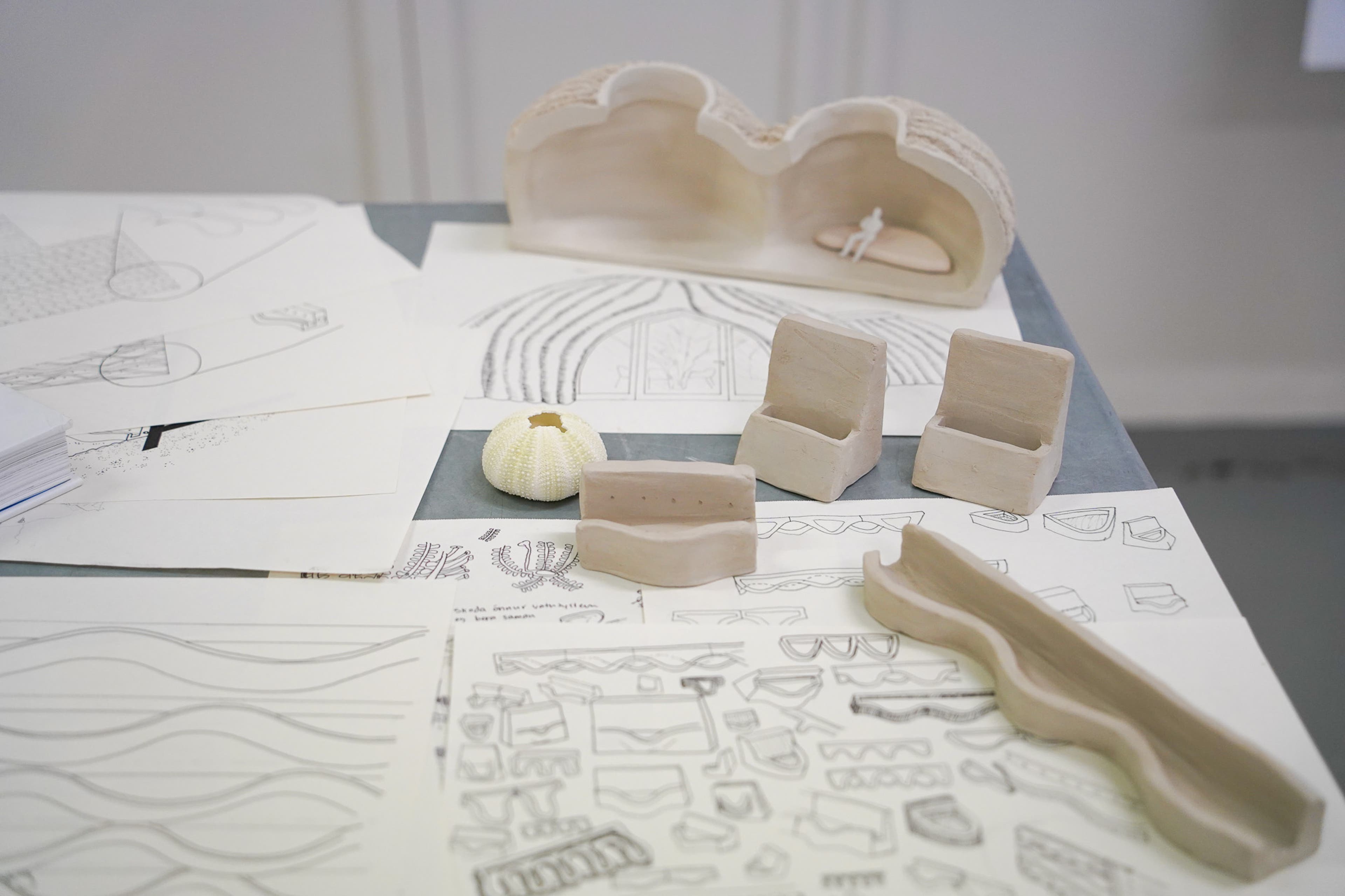
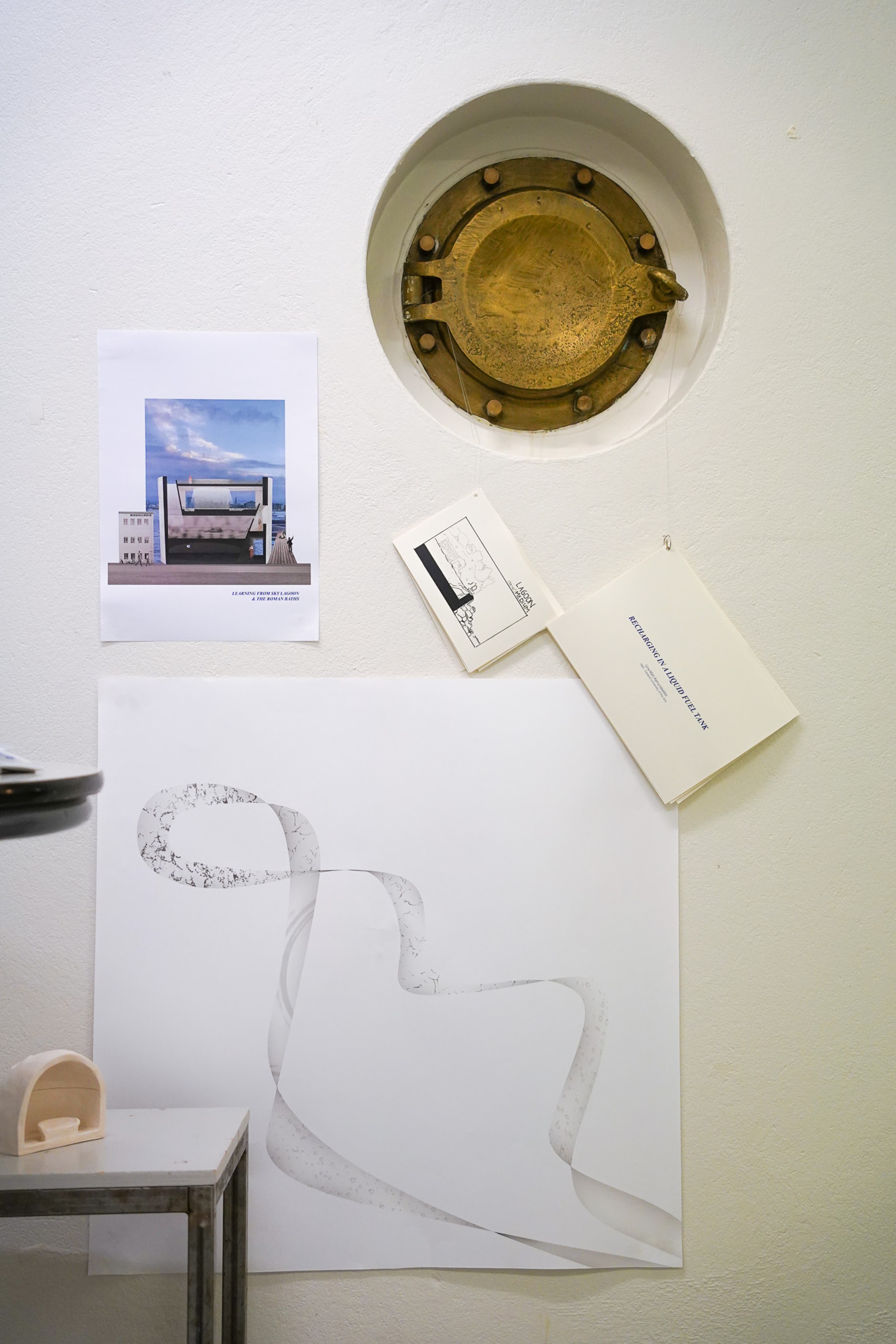
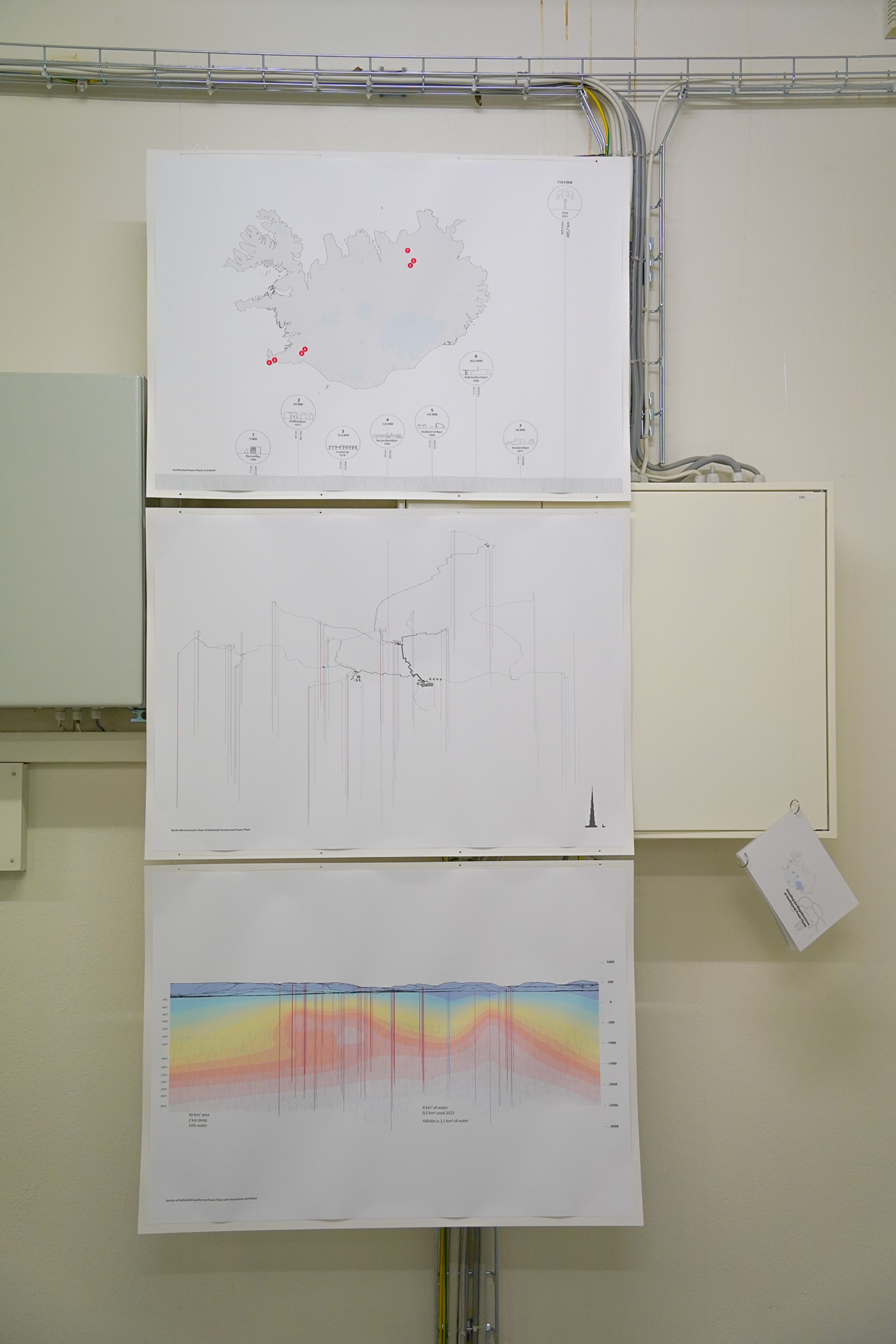
Students:
Alexis Guillemin
Amal Sneih
Ágúst Skorri Sigurðsson
Birta Fönn
Enza Bidal
Hildur Árnadóttir
Laufey Jakobsdóttir
Raquel Kvamsdal
Sigrún Perla Gísladóttir
Una Mjöll Ásmundsdóttir
Teacher:
Anna María Bogadóttir, architect and associate professor.
Guest lecturers & guest critics:
Anna Katrín Lund, Arna Mathiesen, Ásta Olga Magnúsdóttir, Guðbjörg R. Jóhannesdóttir, Guja Dögg Hauksdóttir, Gunnar Þór Jóhannesson, Hrólfur Karl Cela, Katla Maríudóttir, Kristján Örn Kjartansson, Óskar Örn Arnórsson, Páll Jakob Líndal, Sighvatur Ómar Kristinsson, Tinna Grétarsdóttir, specialists from the Marine and Fresh Water Institute.
